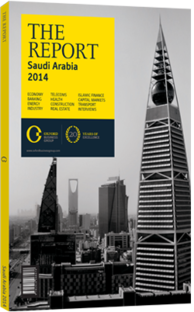Al Rajhi Bank: Banking
Company
Founded in 1978, and headquartered in Riyadh, Saudi Arabia, Al Rajhi Bank is the largest provider of Islamic banking products in the Arab world. The bank operates through a network of 528 branches and employs 10,603 staff across the Kingdom and overseas. The bank’s operations are largely focused on the home market, where it has a 15% market share by assets, although it also has small operations in Malaysia, Jordan and Kuwait. Al Rajhi Bank has the largest retail banking franchise in Saudi Arabia with a market share of 39% in domestic consumer financing. The bank benefits from its ability to attract significant volumes of stable, low-cost retail deposits and also enjoys significant scale advantages over many of its peers. Key shareholders of the bank include the Al Rajhi family, notably Sulaiman Abdulaziz Saleh Al Rajhi (18.7%) and Abdullah bin Abdulaziz Saleh Al Rajhi (6.0%), and the General Organisation for Social Insurance (10.1%); the free float stands at 60%. The bank’s market capitalisation was $28.9bn as of May 4, 2014 with an average daily turnover of $58m over the past three months.
Aided by its purely sharia-compliant offering, Al Rajhi Bank has in the past benefitted from strong growth in consumer financing. However, system-level retail credit growth has experienced a slowdown. As a predominantly retail-focused bank, Al Rajhi is more exposed to this trend than its peers. The bank’s financing volume growth decelerated from 23% year-on-year in 2012 to 7% in March 2014, while deposit growth has also slowed. Over the longer term, however, consumer financing volumes could see a pick-up if Saudiisation efforts promote higher employment levels and higher wages for Saudi nationals. Al Rajhi Bank could also benefit from likely widespread opportunities in the housing market after the introduction of the Mortgage Law. We expect Al Rajhi Bank’s financing volume growth to recover to around 12% per annum over 2013-15, though this would be below the sector average of 14%.
Roughly 95% of Al Rajhi Bank’s assets are located in Saudi Arabia. Its international exposure mainly relates to interbank positions with other banks from the Middle East and North Africa. In 2013, the bank generated 71% of its revenues from retail customers, 14% from its corporate banking division and the rest from treasury and investment or brokerage businesses. The bank could continue focusing on its retail operations.
Over the years, Al Rajhi Bank has consciously diversified its revenue base; it now generates about 68% of revenues from net special commission income, compared to 80% prior to 2010. Supported by its strong retail banking franchise, Al Rajhi has been able to attract a high proportion of low-cost demand deposits (90% of total deposits), allowing it to enjoy structurally superior margins from banking intermediation activities.
Development Strategy
The bank enjoys an impressive market share in fee income, particularly in relation to payments (45% market share in 2013), insurance (40%), loans (20%), share trading and asset management (20%), and corporate finance and advisory (19%). Although fee income declined by 5% in 2013, we believe the bank’s extensive branch network and wide client base provide greater cross-selling opportunities; we predict positive fee growth in 2014 and beyond.
The bank’s revenues have grown by an average of 6% per year since 2008, lower than the 11% per annum balance sheet growth generated over this period. This largely reflects pressure on net special commission income margins arising from a combination of the low profit-rate environment and higher pricing pressure arising from increased competition in the retail banking space. In contrast, fee income over this period has increased by 17% per annum, surpassing the 7% sector average and highlighting the bank’s strong crossselling capacity. Over this period, Al Rajhi’s operating costs have increased by an average of 8% per annum as the bank continues to expand its branch network (528 in 2013 versus 487 in 2010). With operating costs rising faster than revenues, the bank’s cost income ratio has risen from 26% to 29% between 2008 and 2013, although this still compares favourably with its peers.
You have reached the limit of premium articles you can view for free.
Choose from the options below to purchase print or digital editions of our Reports. You can also purchase a website subscription giving you unlimited access to all of our Reports online for 12 months.
If you have already purchased this Report or have a website subscription, please login to continue.

